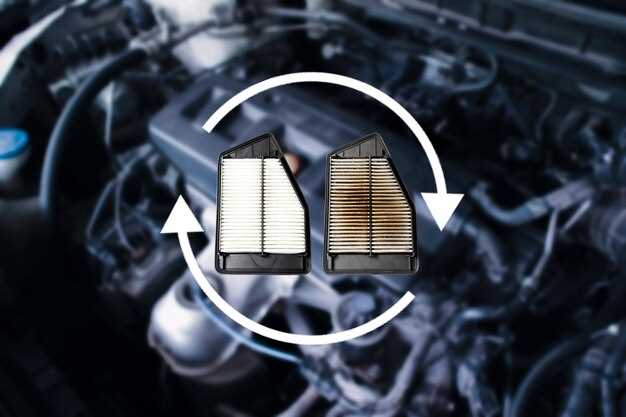

Cold air intakes are one of the most popular upgrades among diesel engine enthusiasts, touted for their ability to improve performance through enhanced airflow. These systems are designed to draw in cooler, denser air, which can lead to significant gains in horsepower and torque. However, with the rise in popularity of cold air intakes, several myths have emerged, causing confusion among diesel engine owners regarding their true benefits and drawbacks.
One of the primary advantages of cold air intakes is their potential to boost engine efficiency. By allowing a greater volume of cool air to enter the engine, these upgrades can improve combustion processes, leading to better fuel economy and increased power output. Additionally, a well-designed cold air intake system can also improve the overall sound of a diesel engine, providing a more aggressive and appealing auditory experience for the driver.
Despite these benefits, there are numerous myths surrounding the performance of cold air intakes. Some believe that they guarantee a dramatic increase in horsepower, while others claim they can cause engine damage due to dirt and debris intake. Understanding the science behind air intake systems and recognizing the truth from the myths is essential for diesel engine owners looking to make informed decisions about performance upgrades. In this article, we will explore the real benefits of cold air intakes and debunk common misconceptions to help you understand how these systems can truly impact your diesel engine’s performance.
Real Torque and Horsepower Gains from Cold Air Intakes

Cold air intakes are popular upgrades among diesel enthusiasts, primarily due to their potential benefits in enhancing engine performance. By improving the air intake system, these modifications aim to increase the volume and quality of air entering the engine, which can lead directly to real gains in both torque and horsepower.
One of the primary advantages of a cold air intake is the capability to deliver cooler, denser air compared to standard intakes. Denser air contains more oxygen, which is crucial for combustion processes. As a result, the engine can burn more fuel efficiently, leading to a notable increase in power output. On diesel engines, even a small increase in air flow can significantly boost torque, allowing for better acceleration and improved towing capabilities.
Numerous tests and dyno evaluations have shown that diesel engines equipped with high-performance cold air intakes often experience gains in horsepower ranging from 10 to 30 horsepower. Torque improvements are also considerable, frequently achieving increases of 20 to 50 ft-lbs. These gains can vary based on the make and model of the diesel engine, the quality of the air intake system, and additional engine modifications.
While some skeptics may dismiss these numbers as exaggerated, independent assessments validate that a quality cold air intake can contribute positively to performance metrics. However, it’s essential to combine the intake upgrades with proper tuning and other engine enhancements for optimal results. This approach ensures that the increased airflow translates effectively into power.
In summary, cold air intakes provide tangible benefits for diesel engines in terms of torque and horsepower. By optimizing air flow and allowing for better combustion, owners of diesel vehicles can enjoy a noticeable performance boost when implementing these upgrades.
Common Misconceptions About Diesel Upgrades and Airflow

When it comes to enhancing diesel engine performance, many misconceptions persist, particularly regarding airflow and cold air intakes. One common myth is that simply installing a cold air intake will dramatically increase horsepower. While a cold air intake can improve airflow and efficiency, the actual gains depend on various factors including engine condition, tuning, and overall setup.
Another misconception is that all aftermarket air intakes provide the same benefits. In reality, quality and design vary significantly. Some poorly designed systems may restrict airflow or allow dirt and debris to enter the engine, negating potential advantages. High-quality cold air intakes often use advanced filtration methods to improve airflow without compromising engine protection.
There’s also the belief that the colder the air, the better the performance. While cooler air does contain more oxygen, which is essential for combustion, it’s important to ensure that the air is also properly mixed with fuel. An excessive focus on cold air intake without addressing fuel delivery can lead to suboptimal engine performance.
Lastly, many diesel owners assume that modifying their intake system will automatically void warranties. While modifications can affect warranty coverage, this largely depends on the specific terms laid out by manufacturers. In some cases, upgrades like a cold air intake might not cause issues if installed correctly and with compatible components.
Installation Tips and Performance Expectations for Diesel Cold Air Intakes
When upgrading your diesel engine with a cold air intake, proper installation is key to maximizing performance. Start by thoroughly reading the manufacturer’s instructions, as this will provide specific guidance tailored to your intake model. It’s advisable to gather all necessary tools before beginning the process, which typically includes basic hand tools, a screwdriver, and possibly a socket set.
Before removing the factory intake, ensure that the engine is cool and your workspace is clean. This will prevent contamination and damage. Remove the old intake components carefully, taking note of how everything is assembled; this will aid in the installation of the new system. Pay special attention to any sensors or hoses that need to be disconnected, as they will need to be reconnected appropriately.
When installing the cold air intake, route the tubing in a way that avoids contact with hot engine components. This helps maintain cooler air temperatures, which is crucial for optimal performance. Ensure all connections are tight and secure to prevent air leaks, which can negatively affect performance and efficiency. Once installed, double-check that the system is correctly positioned and free from obstructions.
After the installation, it’s important to recalibrate the engine, if necessary, to ensure that the fuel-air mixture is optimized for the new intake. Many diesel engines include sensors that will adjust automatically, but checking compatibility with engine management systems can provide additional assurance.
Regarding performance expectations, a cold air intake can enhance throttle response and increase horsepower by promoting better airflow. Users often report improved acceleration and potentially better fuel economy, depending on driving habits and conditions. Keep in mind that these upgrades may vary in effectiveness based on the specific vehicle and engine tuning.
Finally, consider pairing the cold air intake with other performance upgrades, such as a performance exhaust system or tuning software, for even greater benefits. Regular maintenance, such as cleaning or replacing filters, is also vital for sustained performance gains. With the right installation and care, a cold air intake can significantly enhance your diesel engine’s performance.






